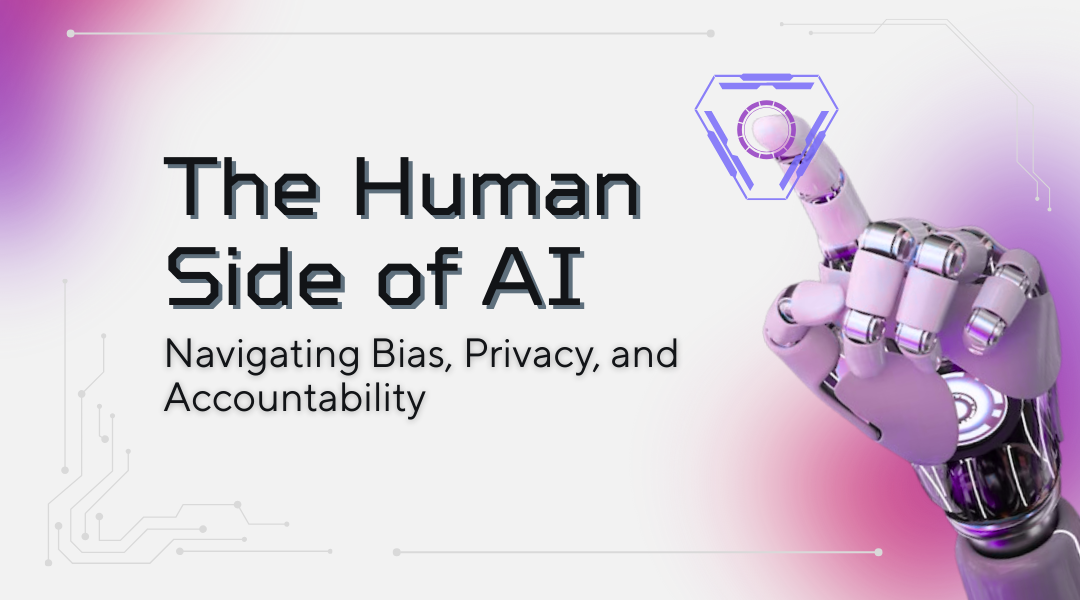AI isn’t some infallible oracle—it’s a mirror, reflecting both the brilliance and the blind spots of the people who build it. And right now, that mirror is showing cracks: algorithms that accidentally discriminate, systems that trade privacy for convenience, and “black box” decisions that leave users in the dark.
When AI Gets It Wrong: The Bias Problem
Remember when a major bank’s loan algorithm was found to approve mortgages for white applicants at twice the rate of Black applicants with identical financial profiles? That wasn’t malice—it was laziness. The model had been trained on decades of historical lending data, which baked in old prejudices like a bad habit.
Where bias sneaks in:
- Garbage in, gospel out: Feed an AI résumé screeners mostly male engineering hires, and it’ll start penalizing women’s resumes for “coding bootcamp” instead of “computer science degree.”
- The proxy war: Even if you exclude race/gender, AI latches onto sneaky stand-ins—like ZIP codes correlating with ethnicity, or “text tone analysis” favoring extroverted communication styles.
- The metric trap: Optimizing for “speed” in hospital discharge predictions? Watch poorer neighborhoods get rushed out faster because overcrowding skews the data.
Fixes that actually work:
- One recruitment platform now adds synthetic “counterfactual” candidates to training data—fake profiles that force the AI to recognize qualified-but-nontraditional backgrounds.
- A credit union runs shadow trials: for every 100 loan applications, 10 are secretly assessed by humans to catch algorithmic oddities.
Privacy: The Invisible Trade-Off
That fitness app telling you when to hydrate? It’s also selling your sleep patterns to data brokers. The dilemma? AI needs data to work, but users rarely understand what they’re giving up.
Real-world solutions:
- The hospital loophole: Instead of pooling patient records, a Mayo Clinic pilot lets AI learn from local data while keeping everything siloed—like chefs sharing recipes but not ingredients.
- The expiration date: A European bank automatically anonymizes transaction data after 90 days unless customers opt in, cutting fraud risk without crippling their fraud-detection AI.
The “Why?” Factor: Demanding Transparency
When an AI denies your insurance claim or filters your job application into oblivion, “the algorithm decided” isn’t good enough. Yet most companies can’t explain their own systems.
Who’s getting it right?
- Healthcare: The FDA now requires medical AI tools to highlight which factors drove diagnoses (e.g., “87% weight given to tumor shape vs. 13% to bloodwork”).
- HR: A tech firm gives rejected candidates a breakdown like: “Your application scored low on keyword match for ‘Python,’ but high on ‘team leadership’—would you like to speak to a recruiter about other roles?”
The Checklist: Deploying AI Without Regret
Before greenlighting any AI project, ask:
- “What’s the worst possible outcome?”
- Example: A chatbot meant to streamline customer service starts gaslighting users about warranty coverage. Have a kill switch.
- “Who does this fail for?”
- Test with non-English speakers, elderly users, people with disabilities. One grocery chain’s voice-ordering AI kept mishearing Caribbean accents until local staff forced a retrain.
- “Can we stomach the paperwork?”
- GDPR fines hit 4% of global revenue. Cheaper to hire a privacy lawyer upfront than explain to shareholders why your customer-profiling AI triggered a class action.
- “What’s the exit plan?”
- When a ride-share AI’s surge pricing went haywire during a blizzard, drivers manually overrode it. Always keep a human veto.
The Bottom Line
AI’s greatest risk isn’t robot overlords—it’s companies treating it like magic instead of machinery. The best teams bake ethics into the process:
- Bias testing isn’t a one-off—it’s as routine as oiling factory robots.
- Privacy isn’t an afterthought—it’s the price of admission.
- Transparency isn’t optional—if you can’t explain it to a 12-year-old, don’t deploy it.
The future belongs to organizations that wield AI like a scalpel, not a sledgehammer. Because trust, once lost, is hell to rebuild—just ask any social media exec.
